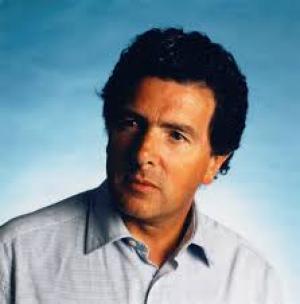LEGENDS OF
LIGHT MUSIC
Howard Blake

"THE
SNOWMAN" AND ALL THAT : THE
MUSIC OF HOWARD BLAKE
By Philip L Scowcroft
As I write, the
Christmas TV feature "The
Snowman" is 30 years old;
the music for that, comprising
not only the song Walking in the
Air, but a nigh on 30 minutes
sound track (though not for its
2012 Channel 4 sequel, "The
Snowman and the Snowdog")
was by Howard Blake. The composer
may have become fed up with being
remembered primarily for that,
rather as Rachmaninoff was, when
asked to play so many times that
Prelude. In fact he has produced
so many works - upwards of 600 -
that it will not be the easiest
of tasks to summarise his output.
Generally speaking it has an
easy, shapely, lyrical feel;
although it includes substantial
pieces like concertos and a
Symphony we may fittingly regard
it as "light music" in
its broader sense.
Howard Blake,
appointed OBE in 1994, pianist
and conductor as well as
composer, was born in 1938, in
London, although he was brought
up in Brighton. He studied at the
Royal Academy of Music with
Harold Craxton and Howard
Ferguson. Evidence of this
classical training may be found
in his concertos for clarinet,
piano (1994, later recorded) and
violin and a Symphony in one
movement subtitled Impressions of
a City. Other orchestral
compositions include Concert
Dances, A Nursery Rhyme Overture
(1987), Heartbeat for tenor
saxophone, big band and strings
(1982, revised 1989) and a suite
for strings entitled A Month in
the Country derived from a play;
other incidental music (for
theatre, TV and film) we can
exemplify was for "The
Avengers" (1968), "SOS
Titanic", "Henry
V" (1985), "The
Canterville Ghost" (1986)
and "The Master Builder
" (1989).
His work included
a considerable amount of what we
may describe as "light
chamber music": Penillionand
a charming Burlesca for violin
and piano, Jazz Dances for cello
and piano, originally for two
pianos; a Piano Quartet; and two
deliciously tuneful Trios for
respectively, flute, clarinet and
piano and piano, violin and
cello. Piano solo repertoire (as
we have seen, the piano was his
primary instrument) includes an
appealing Ballade in G Minor,
Eight Character Pieces, notably
an Andantino in B Minor, and a
suite, Party Pieces.
Apart from The
Snowman, Blake is not unknown to
the world of film music. He
provided a score for an
adaptation of Erskine Childers'
classic 1903 novel of secret
service, "The Riddler of the
Sands". His music for
"Agatha", a film not in
the best of taste, about Agatha
Christie's notorious
disappearance of 1926 was
attractive but for some reason
was not used. He also wrote music
for a TV advertisement for the
British Paralympic Association.
Blake's portfolio
included a children's musical and
a large number of solo songs and
choral works; we have not space
here for even a selection of
their titles.
It is perhaps a
pity that The Snowman overshadows
his generally amiable output. It
may be, too, that its prolific
nature has, as so often happens
(and not just in our present day
– think of Telemann!),
worked against more than a small
proportion of it being performed.
But this should not prevent us
saluting that output and the
pleasure it has given us.
This article first
appeared in ‘Journal Into
Melody’, issue 195, April
2013.
|